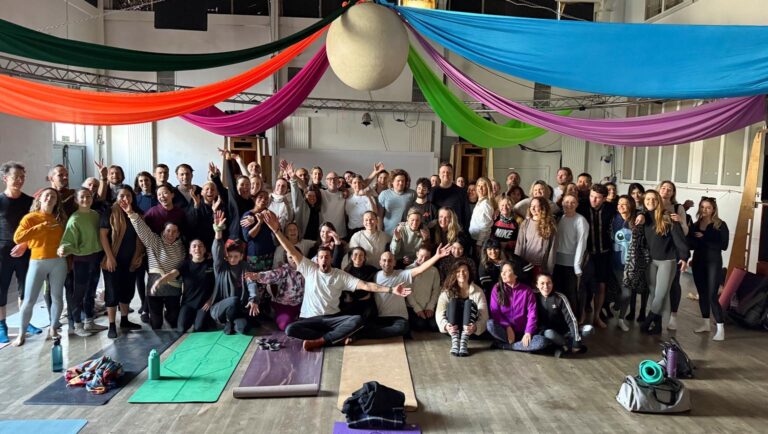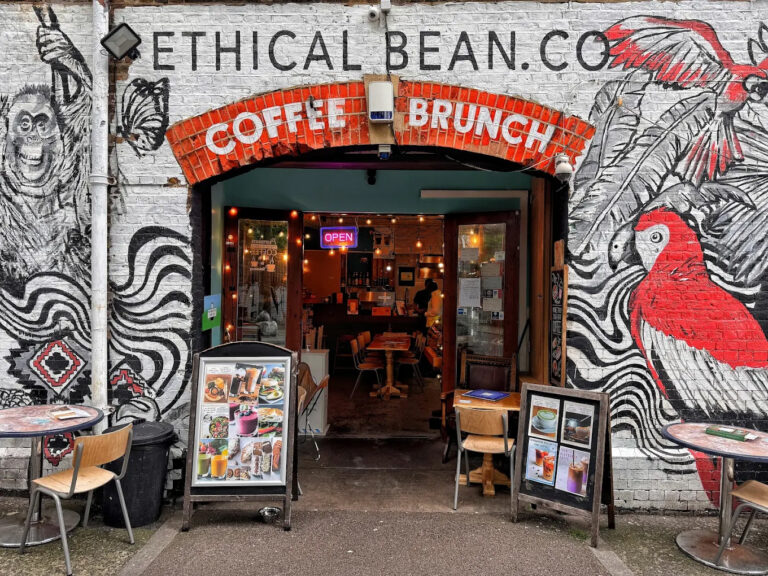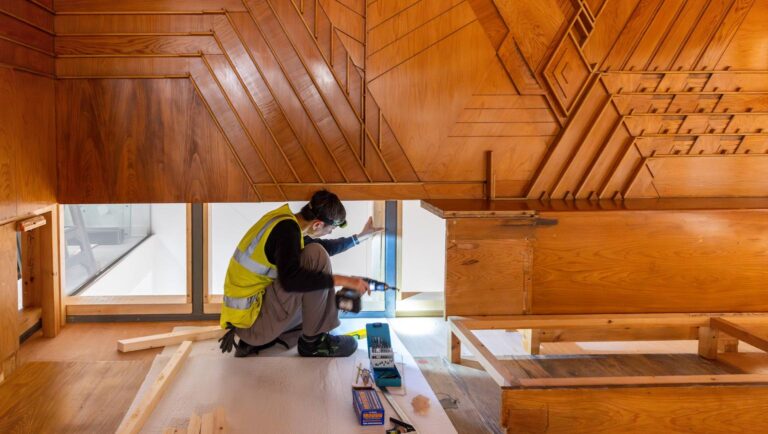
Mattia from Community Yoga Project on the joy of human connection
Exploring the health advantages of belonging to something bigger than ourselves
How did you come to HWFI?
We found the place I live at now when it was still a working factory. Around 2002 a developer had bought the site, he’s showing us round and I think ‘I would love to live here’. I got together with a few friends and we bought the whole back lot between us and divided it up roughly with the money we each put in.
Can you see yourself staying here?
Yes, I am loathe to part with it now. It’s very nice having a yard like this, and while the neighbours are really nice I’m happy to carry on living here. It would be horrible if we didn’t have nice neighbours as you are slightly on top of each other here. I’ve seen children be born and grow up into young people and all that sort of thing. It has a lovely spirit about it; not too fancy and not too scruffy, it’s just about the right thing for me.
What aspect do you love most ?
What I liked about it originally was the apparent freedom of space the area had. There were lots of relatively unclaimed spaces and lots of cheap empty buildings where loads of young people were doing interesting things. Some warehouses had near on 20 people living in one space. It was like a cauldron of other ways of living. I liked the street energy and the vitality.
What changes would you make to improve things here?
I’m starting to see a repeat of what happened in Hoxton and Shoreditch – in that there are endless bars, with great squadrons of young people getting hammered at weekends. When you are looking in from the outside, it gets a bit depressing. I don’t want to condemn anyone for what they want to do, but I do think being in an area where people come from outside London to socialise, get drunk, stagger round and go home again, is not a desirable aspect of life in the Wick.

What has living in HWFI taught you about life?
I suppose an awareness that cities change and develop, and you can’t freeze things. There was a writer who lived in this area, Iain Sinclair, he used to be very anti-the Olympic Park. He had a reasonable point in that a big organisation took over, scrubbed it clean and turfed everyone out. There were undoubtedly large losses, allotments and houses and such. Hardly anyone ever came here, the canals were full of rubbish and shopping trollies, but we had grown up on them. It became incorporated into this sort of romanticised ideal of post-industrial decay. There is a seduction about all that, but you can’t freeze it and let it rot forever. For all the disruption, it has brought a beautiful park to the area that didn’t exist before. It’s bringing new culture too and has already brought lots of commercial opportunities.
What’s your greatest achievement?
Having two healthy kids. I had a pretty rackety early life and it would be fair to say it’s been quite an achievement making a career and life for myself as an artist and finding some measure of success and gratification in the process. In the last 12 months I have also been rediscovered. I’ve gone from hardly getting commissions to having loads. I have a big commission for the Southbank Royal Festival Hall, the River Terrace Balcony over Christmas was a big installation of mine. There is a big one at Canary Wharf at the moment as part of a Summer Lights Festival. I was also commissioned by Rich Mix to create a piece called ‘Illuminate: Shards of Light, the Feeling of Remembering’ which explores the memories of the older East Londoners.
What motivates you in your work?
I have a sort of restless energy. I’ve got a strong emotional and intellectual interest in things like perception, space, and light. I’m always interested in pushing the boundaries with what I think is interesting , possible, and desirable. There’s something true about the saying that you fail and then you fail better. I’m always learning and I’ve got a lot of curiosity for somebody of my age. How we make art and what we do with it and how we see ourselves in relationship to city spaces are all areas of fascination.

How did you start your career?
I was bought up in Southsea in Portsmouth and the beach we lived near became an extension of our home. We learnt that looking across to the Isle of Wight would give you an indication of what the weather would be like the next day. It was a popular seaside resort with coloured lamps along the seafront. The lights are what turned it into a holiday for people; a romantic promenade of light and colour. At one end was a funfair where the lights, sounds, colour and smells made a different kind of space altogether. It gave it a frantic and vibrant energy. I am Jewish, and light is such an important part of Judaism.
Who is a HWFI hero?
Tracy Trimmer was instrumental in putting together the Hub 67 community centre for the Wick Award and the LLDC and used to chair the Hackney Wick Festival. And she has done a lot of good social work within the community.
How would you describe HWFI as a sound, taste, and/or smell?
Is it drum and bass? Is it grime? Often the sound of Hackney Wick is musical with occasional bad- tempered shouts. It’s also the sound of the motorways. It’s even the joyous silence of butterflies landing on leaves in Hackney Woods. As for smells, I think pot and beer, the occasional smell of BBQ’s and the new expensive coffee shops.


Exploring the health advantages of belonging to something bigger than ourselves

Your timely reminder to go visit these amazing restaurants, bars and cafes this summer while we wait for better bridge access…

The twist and turns of post-Olympics decision-making that brought 250,000 objects to Here East
A joint venture in collaborative local media from:


In partnership with

Regulated by IMRESSS, the Independent Monitor for the Press CIC.
For more info on our complaints policy, or to make a complaint, visit FAQ.
